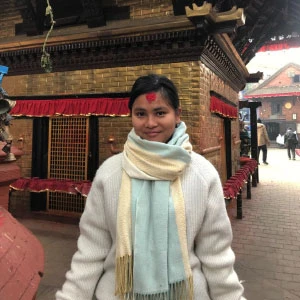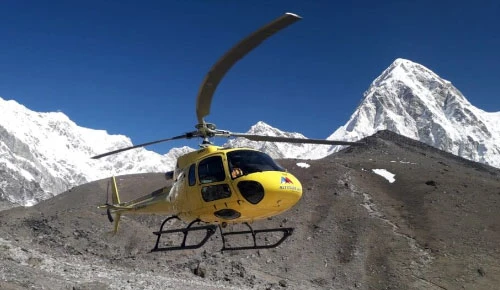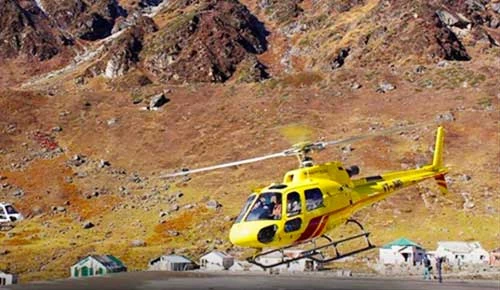Packing List for Kanchenjunga Region Trekking
Kanchenjunga is the third-most popular peak in Nepal. Most of the trekkers dream of visiting the peak because they want to feel alone and experience the untouched landscape and the Himalayan culture.
The Kanchenjunga trail is considered less crowded than the already overcrowded Everest and Annapurna trails, leading to remote villages, forests, and snow-white mountains that are among nature's best-kept secrets.
It is not located on a major highway, and it is not easily accessible, so proper planning and packing should be done well to maximize safety, comfort, and experience. When packing for the Kanchenjunga trek, there is more than clothes and equipment that is needed, but preparation for the many weather conditions, rugged paths, and long days on the trail.
Packing ahead of time would be advantageous because resources are valuable. Additionally, there are high-quality shoes, clothing, walking sticks, hydration devices, and other documents that are essential for your trip. This final packing list is full of the necessities, and you should be on the trail fully equipped and ready to explore the little gems of the Himalayas that Nepal has to offer.
Table of Contents
Clothing Essentials
The proper clothing is essential for comfort, safety and flexibility while trekking in the Kanchenjunga region. The temperatures vary radically in the region when it is hot in the daytime and freezes at night when it is at a higher elevation. The only solution is layering: waterproof outerwear, base layers that will keep the moisture off your body, and insulating mid-layers will make sure that you will be both dry and warm.
Other accessories, like gloves, hats, and UV guards against sunshine, ensure protection against frostbite as well as the UV beams of the sun. To add more weight loss and keep you comfortable on long and rough trails, it is more appropriate to wear lightweight clothes, which are versatile and can be made of synthetic or wool.
Key Clothing Items:
- Base Layers: Thermal tops and bottoms constructed of moisture-wicking fabric to be dry and warm.
- Insulating Layers: warm-up jackets made of fleece or down to use when it gets cold at night or when you go to a very high altitude.
- Outer Layers: Trekking pants and waterproof jackets that are windproof to keep the rain and snow off.
- Trekking Bottoms: Choose fast-dry pants or convertible pants for better mobility.
- Accessories: Hand protection, head, neck, and eye protection: Gloves, beanies, buffs, and UV sunglasses.
Footwear
Trekking the challenging Kanchenjunga paths requires shoes that are comfortable for the mountain routes. Waterproof ankle support trekking shoes of strong fabric and wool or synthetic socks eliminate the risks of friction and blisters, which occur on rocky and uneven surfaces, reducing the risk of injuries. Gaiters also make sure that there is no rubbish, mud, or snow in your footwear, and lightweight camp shoes simply make evenings in teahouses or lodges a pleasant experience. The right and comfortable pair of boots can make a significant difference in getting around, preventing unnecessary fatigue, and spending many days on trekking without having to experience pain. Correct footwear is a cost to protection and the experience of trekking in general.
Essential Footwear:
- Trekking Boots: Waterproof, yet high-ankle to make them stable in rocky and steep paths.
- Trekking Socks: The warm and blister-prevention socks are made of wool or synthetic.
- Gaiters: keep snow, mud, and small stones out of boots.
- Camp Shoes: Lightweight sandals or a pair of shoes that are to be worn after a tiring day of trekking.
Backpacks & Bags
The efficient transportation of all your trekking equipment depends on properly arranged water and snacks and additional clothing layers. In the backpack, your clothes and electronic devices are safe from rain and unplanned spills.
Your daypack will hold your clothing, equipment, and food, while your main backpack will contain additional items; a useful way to locate what you need is by using dry bags, waterproof liners, and stuff sacks. A properly packed backpack system can evenly distribute the weight among the pack. This will help to eliminate fatigue and make the retrieval of your necessities easy when taken on long mountain climbs.
Backpack Essentials:
- Main Backpack (50–65 L): The main backpack serves as a storage container for clothing items and large equipment and additional supplies.
- Day Backpack: The daypack serves as a 20–30 L storage container for carrying essential items, such as snacks, a camera, and a water bottle.
- Dry Bags/Waterproof Liners serve as protective containers that shield your belongings from rain and snow and wet environments.
- The use of Stuff Sacks helps you arrange your clothing and equipment to achieve better packing organization and simpler retrieval.
Sleeping & Camping Gear
The Kanchenjunga Trail has places where people have to camp, yet most of the trekkers prefer to stay in teahouses. Having a comfortable sleep and staying warm is vital to the capability to get good rest and have energy levels. A sleeping bag that has a sub-zero rating keeps you warm even when the weather is cold at night and in the common wards. Foam or Inflatable sleeping mats block cold ground surfaces, and a reliable headlamp enables you to carry an extra layer of warm clothes or a sleeping bag liner, even if you spend the night in the teahouses, allowing for safe movement in dark campsites. The lodging facilities are high in altitude and therefore lack sufficient heating, which is uncomfortable.
Sleeping and Camping Necessities:
- The sleeping bag offers a sub-zero temperature feature; this keeps you warm on the freezing night.
- The sleeping bag liner is a nice value added since it offers a feeling of extra warmth as well as hygiene when sharing sleeping space with others.
- Sleeping mat gives foam or inflatable insulation that shields users against cold surfaces.
- A headlamp with spare batteries serves as a vital tool for both nighttime exploration and early dawn departures.
Trekking & Technical Gear
Trekking gear is technical and ensures safety, convenience, and readiness in isolated places. Trekking poles decrease the stress on the knees and offer stability during the ascending mountain tracks; a hydration system will help get clean water. Purifying tablets or filters prevent waterborne illnesses. The use of maps, compasses, or GPS devices is beneficial as they help prevent loss. A multi-tool or a knife is useful for emergencies or minor repairs. There should be first aid kits, medicine against altitude sickness, blister pads, and rudimentary medical supplies. The Himalayan UV is strong and sunscreens and lip balms can shield it.
Trekking and Technical Equipment
- Trekking Poles: The poles used are adjustable and lightweight to provide support and less strain.
- Hydration System: To be hydrated, hydration packs or water bottles.
- Water Purification Tablets/Filter: Water is now safe in remote areas.
- Navigation: Maps, compass, or GPS so as not to get lost.
- Multi-tool/Trekking Knife: This tool can be used in case of emergency or minor repair.
- First Aid Kit: Include blister pads, bandages, painkillers, and medication for altitude sickness.
- Sunscreen Lip Balm: A high SPF for skin and lips.
Electronics & Communication
When trekking in remote areas, electronics play a crucial role in capturing memories and maintaining necessary communication. Power-bank mobile phones are essential in times of emergency, and you can record the stunning views on the cameras or GoPros. Chargers and solar chargers supply power, which is in electricity-deficient regions. Extreme remoteness or emergencies only Satellite phones are optional but worth having in case of an emergency. The waterproof cases or dry bags of all electronics are used to avoid destruction by rain, snow, or accidental spills.
Necessary Electronic and Communication equipment:
- Mobile Phone And Power Bank: To find the way home.
- Camera or GoPro: to capture the beautiful Himalayan landscapes.
- Chargers and a solar charger provide extra electricity while in remote areas.
- Satellite Phone (Optional): to be in the most remote area or in case of an emergency.
Food & Snacks
It is crucial to be energetic during the days of trekking to be more stamina-focused. Snacks like nuts, trail mixes, and protein bars contain high energy and are quick foods, whereas instant soups or noodles can be used as quick meals in high-altitude areas. The electrolyte powders are used to keep you hydrated and prevent fatigue. Always bring a little bit of snacking food because you will get hungry when the next teahouse or village is too far away. Smart snacking makes you stay active and not gain extra pounds in your backpack.
Essential Food & Snacks:
- High-Energy Snacks, Nuts, trail mixes, protein bars, and chocolates.
- Instant Soups or Noodles: Fast food for high-altitude days.
- Electrolyte Powders: Keep fluids and body energy high.
- Extra Snacks: You need to have enough food between villages or teahouses.
Important Documents & Money
Effective documentation makes trekking experiences and emergency preparedness a smooth process. Trekking and passport permits such as the Kanchenjunga Restricted Area Permit (RAP) and TIMS card are required. The contact information and identification of the emergency should be stored in a secure place. Bring money in smaller denominations and you will find that the remote villages have no ATM. High-altitude trekking and possible helicopter evacuation travel insurance should be taken. Place these documents in waterproof folders to ensure their safety and convenience during your trek.
Essential Documents & Money:
- Passport and Trekking Permits: Kanchenjunga Region, RAP, and TIMS.
- Contact information and ID:Save copies in a waterproof folder.
- Cash in Small Denominations: It may not be banked in remote areas.
- Travel Insurance: High-altitude trekking and emergency evacuation.
Optional Items
Extra services provide convenience, comfort, and pleasure without any additional burden. You can write about your trek in a journal or notebook, and light trekking chairs or mats can be used to rest. Use entertainment such as books, cards, or music players to make periods enjoyable. Minor repairs in the gears can be done using small sewing kits. They are not mandatory, but these things can help make the long days of trekking pleasant and unforgettable.
Optional Items:
- Notebook/Journal: Create a journal to document your experience and trip.
- Lightweight chairs or mats: Sit back at campsites or tea houses.
- Entertainment: books, cards, or music players.
- Small Sewing Kit: Rapid equipment mends clothes or backpacks.
Tips for Packing Smartly
The intelligent packing will guarantee a comfortable and effective expedition. Wear layers so as to change with the changing temperatures. Place a pocket with frequently used items for easy access. Focus on light, multifunctional equipment to decrease strains. You should never be caught without dry bags or liners, as they are utilized to keep your things dry in case it rains, snows or even spills accidentally. The packing will be effective and well-organized to avoid fatigue, keep the key items near, and allow the trekkers to focus their full attention on the marvelous scenery and culture of Kanchenjunga.
Packing Tips
- Layer Up and Down: Wear clothes so that they can be comfortable in all temperatures.
- Storage: Keep things that one uses on a daily basis in the outside pockets of the backpack.
- Minimize Clinical Equipment: Minimize stress and enhance mobility.
- Waterproof belt items: secure valuable equipment in case of rain, snow or moisture.
Conclusion
The Kanchenjunga Region Trekking is a once-in-a-lifetime experience. Its far-off tracks, picturesque nature, and the real Himalayan society require prior planning. Having a full backpack will guarantee safety, comfort, and convenience while exploring the unknown wilderness of Nepal.
Get ready to explore Kanchenjunga in full with Nepal Trek Adventure, the only person you can rely on to take you down the most isolated and uncharted path in Nepal. Under proper equipment, you will be in a position to walk securely and easily without any fear as you explore the beautiful landscape and distinctive culture of the Kanchenjunga region. Now it is time to begin planning, pack smart and enjoy the adventure of a lifetime!








